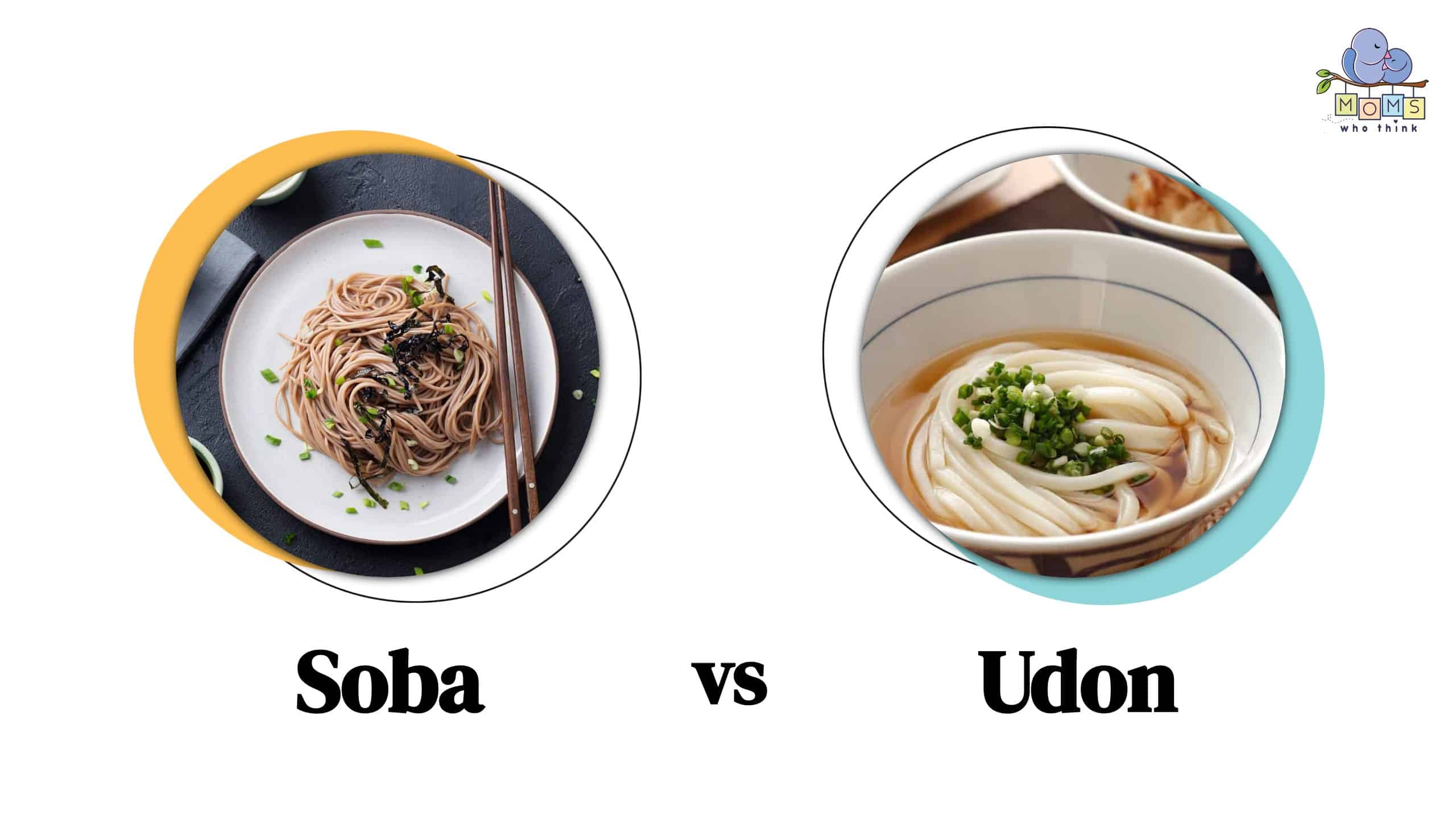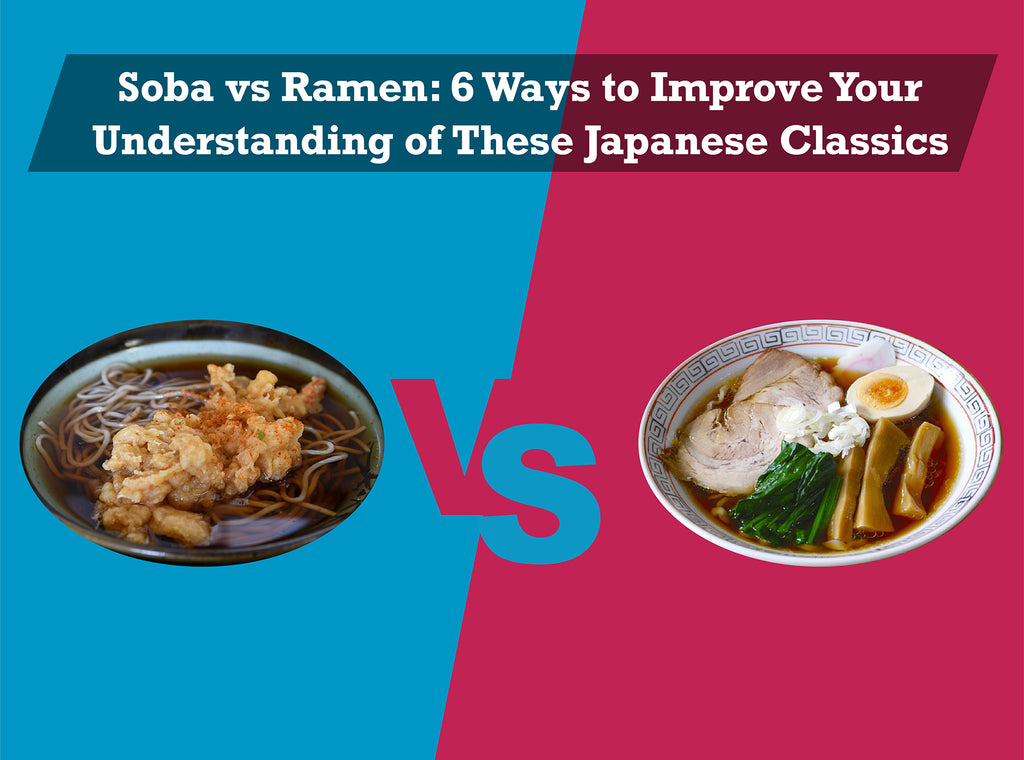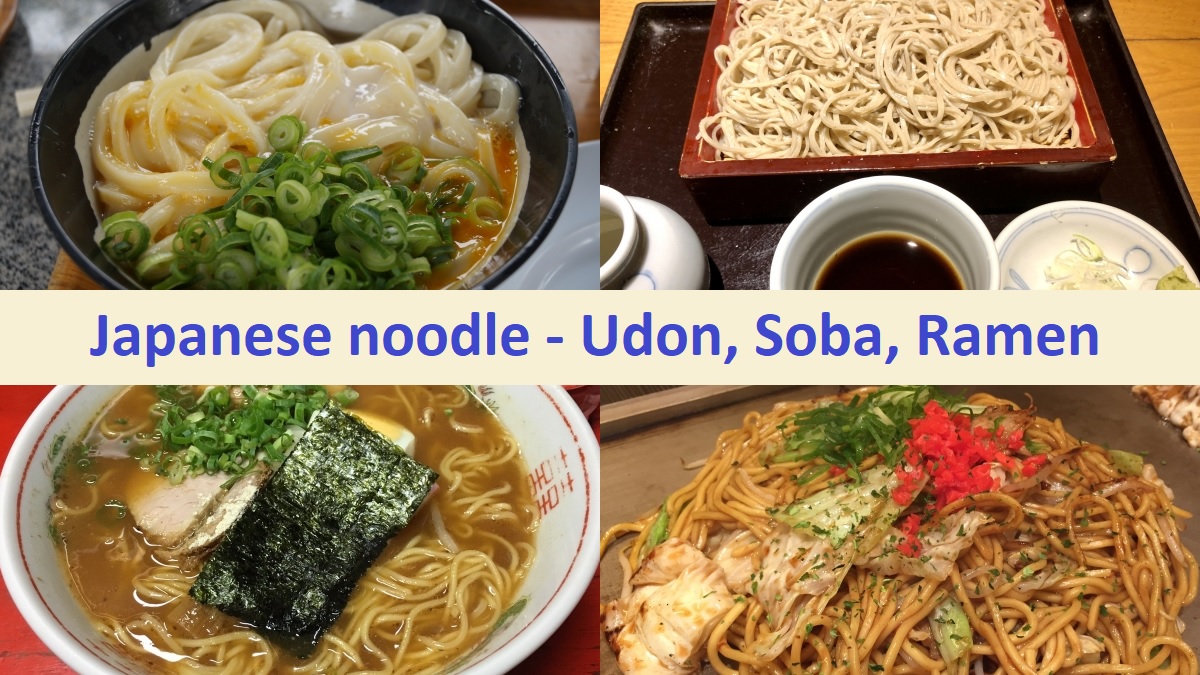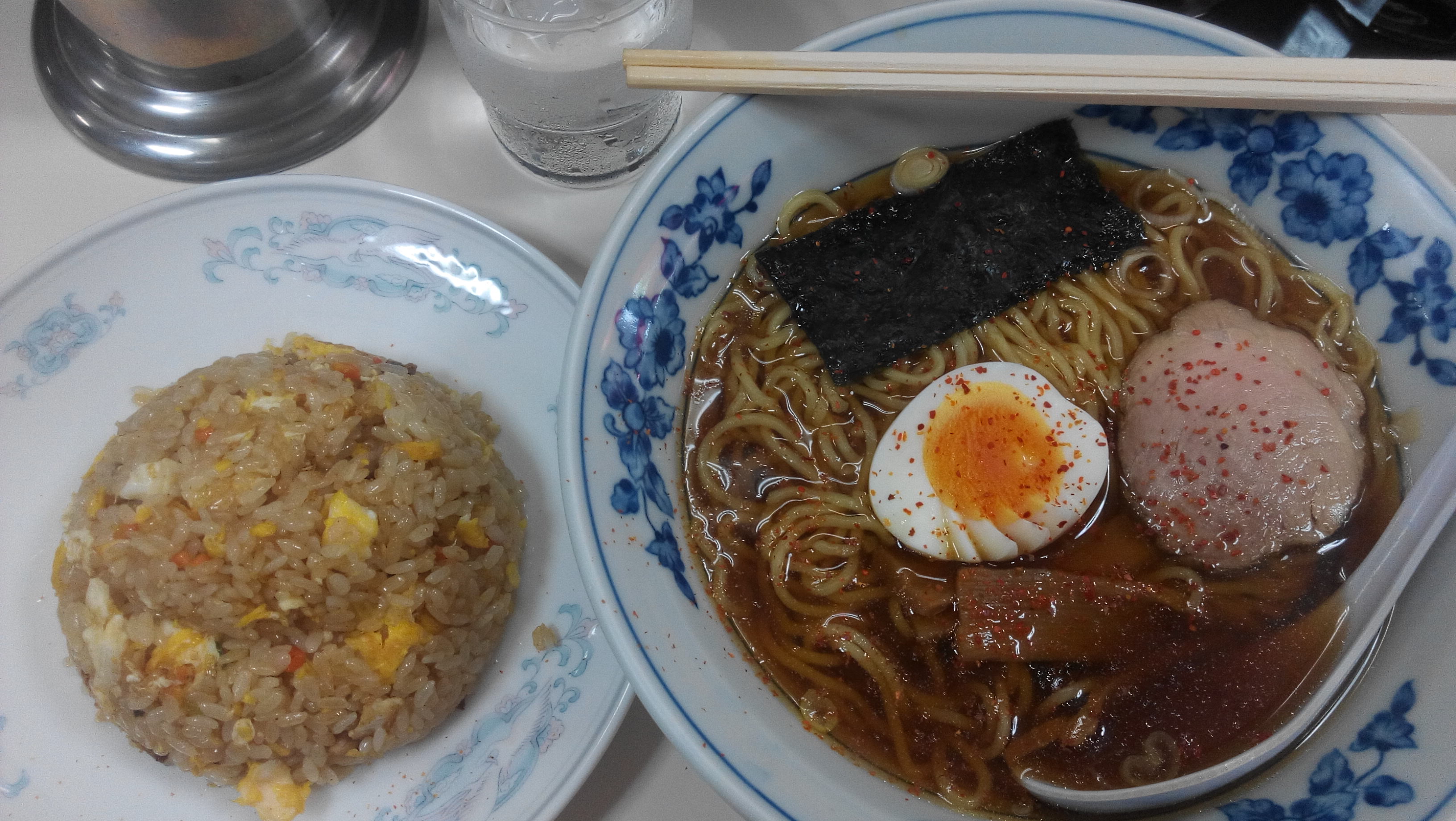Origins And Characteristics

Ramen originated in China and was introduced to Japan in the late 19th century. It quickly gained popularity and became a staple in Japanese cuisine. Ramen noodles are made from wheat flour and have a chewy texture. They are typically served in a flavorful broth with toppings such as sliced pork, green onions, and bamboo shoots. Soba, on the other hand, is made from buckwheat flour and has a nutty flavor. It is often served chilled with a dipping sauce or in a hot broth with various toppings. Both noodles have distinct characteristics that contribute to their unique taste and texture.
1 Overview Of Soba Noodles
Soba noodles are a type of Japanese noodle made from buckwheat flour. They have a distinct nutty flavor and a slightly chewy texture. Soba noodles are versatile and can be enjoyed in both hot and cold dishes. They are often served in a flavorful broth or chilled with a dipping sauce. Soba noodles are commonly topped with ingredients such as sliced green onions, tempura, or Nori seaweed. They are a popular choice for those seeking a healthier noodle option, as buckwheat is known for its nutritional benefits. Overall, soba noodles offer a unique and delicious dining experience.
2 Overview Of Ramen Noodles
Ramen noodles are a popular and beloved Japanese dish that consists of Chinese-style wheat noodles served in a flavorful broth. Unlike soba noodles, which are made from buckwheat flour, ramen noodles are made from wheat flour, water, and sometimes egg. The noodles are typically thin and curly, and the broth can vary in flavor, ranging from soy-based to miso or pork-based broths. Ramen is often topped with ingredients such as sliced pork, seaweed, bamboo shoots, green onions, and a soft-boiled egg. The combination of the hearty noodles and rich broth makes ramen a satisfying and comforting dish.
Ingredient Differences

When it comes to ingredient differences, the main distinction between soba and ramen noodles lies in the flour used to make them. Soba noodles are primarily made from buckwheat flour, which gives them a distinct nutty flavor and a slightly grainy texture. On the other hand, ramen noodles are typically made from wheat flour, water, and sometimes egg, resulting in a softer and chewier texture. Additionally, the broth used in ramen dishes often contains soy sauce, miso, or pork, while soba noodles are commonly served with a dipping sauce made from soy sauce, mirin, and dashi.
1 Ingredients Used In Soba Noodles
Soba noodles are primarily made from buckwheat flour, which gives them their distinctive flavor and texture. In addition to buckwheat flour, soba noodles may also contain a small amount of wheat flour to help bind the noodles together. Other common ingredients used in soba noodle preparation include water, salt, and sometimes eggs. These simple ingredients create a nutty and earthy flavor profile that pairs well with a variety of toppings and dipping sauces. Soba noodles are a versatile and nutritious option for those looking for a gluten-free or healthier alternative to traditional wheat-based noodles.
2 Ingredients Used In Ramen Noodles
Ramen noodles typically consist of wheat flour, water, salt, and sometimes eggs. The wheat flour provides the base and gives the noodles their chewy texture. The addition of salt enhances the flavor of the noodles, while eggs contribute richness and a golden color. Ramen noodles often have an alkaline component, such as kansui or sodium carbonate, which gives them their distinct yellow color and springy texture. In addition to these basic ingredients, various toppings and seasonings are added to create the flavorful broth and complete the ramen dish.
Preparation And Serving

When it comes to preparation and serving, Soba and Ramen differ in their cooking methods and presentation. Soba noodles are traditionally boiled and then rinsed with cold water to remove excess starch, resulting in a firm, chewy texture. They are often served chilled on a bamboo tray, accompanied by a dipping sauce or broth on the side. On the other hand, Ramen noodles are typically cooked in a flavorful broth and served hot. They are commonly topped with various ingredients such as sliced pork, green onions, nori, and soft-boiled eggs. Both dishes offer unique and delicious ways to enjoy Japanese noodles.
1 Cooking Methods For Soba Noodles
Cooking methods for Soba Noodles involve boiling the noodles in hot water until they are cooked al dente. After boiling, the noodles are rinsed with cold water to remove excess starch and to achieve a firm, chewy texture. They can then be served cold on a bamboo tray, accompanied by a dipping sauce or broth on the side. Alternatively, the noodles can also be added to a hot broth and cooked briefly before being served hot. The cooking time may vary depending on the thickness of the noodles.
2 Cooking Methods For Ramen Noodles
When it comes to cooking Ramen noodles, there are two main methods: stovetop and instant.
- Stovetop Method: In this traditional method, the noodles are boiled in a pot of water until they are cooked al dente. While the noodles are cooking, the broth and other ingredients are prepared separately. Once the noodles are ready, they are drained and added to the hot broth, along with toppings such as sliced pork, boiled egg, and green onions. The noodles soak up the flavorful broth, resulting in a delicious and comforting bowl of Ramen.
- Instant Method: Instant Ramen noodles are popular for their convenience and quick preparation. To cook instant Ramen, the noodles are placed in a bowl and covered with boiling water. After a few minutes, the noodles soften and are ready to be enjoyed. The included seasoning packet can be added to enhance the flavor, and toppings like vegetables or meat can also be added for extra taste and texture. This method is perfect for a quick and easy meal.
Overall, whether you choose the stovetop or instant method, Ramen noodles are a versatile and satisfying dish that can be customized to your taste preferences.
Flavor Profiles

Flavor profiles play a crucial role in distinguishing between Soba and Ramen noodles. Soba noodles have a nutty and earthy flavor that comes from the use of buckwheat flour. They have a slightly chewy texture and a subtle sweetness. On the other hand, Ramen noodles have a more umami-rich and savory taste. The broth used in Ramen dishes is often flavorful and can range from pork-based tonkotsu to soy-based shoyu. The noodles themselves are thin and springy, absorbing the flavors of the broth. Both Soba and Ramen noodles offer unique and satisfying flavor experiences.
1 Taste And Texture Of Soba Noodles
Soba noodles have a unique taste and texture that sets them apart from other Japanese noodles. They have a nutty and earthy flavor, thanks to the use of buckwheat flour. This gives them a subtle sweetness and a distinctive richness. The texture of soba noodles is slightly chewy and firm, providing a satisfying bite. The noodles are thin and delicate, making them a perfect choice for cold dishes like zaru soba or dipping them in a flavorful broth. The combination of the distinct flavor and satisfying texture makes soba noodles a delightful culinary experience.
2 Taste And Texture Of Ramen Noodles
Ramen noodles have a distinct taste and texture that sets them apart from other Japanese noodles. The taste of ramen is often savory and rich, thanks to the flavorful broth it is typically served in. The noodles themselves are soft and springy, providing a pleasant chewiness when you take a bite. The texture of ramen noodles can vary depending on the type, with some noodles being thin and delicate, while others are thicker and more substantial. The combination of the flavorful broth and the satisfying texture of the noodles makes ramen a beloved and comforting dish.
Regional Variations

Regional Variations:
Soba and Ramen have their own regional variations across Japan. In the case of Soba, different regions have their own unique styles of preparing and serving the noodles. For example, in Tokyo, the noodles are typically thin and served cold with a soy-based dipping sauce. On the other hand, in Nagano Prefecture, buckwheat flour is often mixed with wheat flour to create a heartier noodle known as “Juwari Soba.”
Similarly, Ramen also varies between regions, with each area having its own distinct broth and toppings. For instance, Hokkaido is famous for its rich and buttery miso-based Ramen, while in Kyushu, tonkotsu ramen made with pork bone broth is a popular choice. These regional variations add to the diversity and excitement of enjoying Soba and Ramen throughout Japan.
1 Regional Varieties Of Soba Dishes
Soba noodles have a range of regional variations in Japan, each with its own unique flavors and ingredients. In Tokyo, the noodles are typically thin and served cold with a soy-based sauce. In Nagano Prefecture, Juwari Soba is a popular variation made with a mix of buckwheat and wheat flour, resulting in a heartier and chewier noodle. Kyoto is known for its Kyo Soba, which has a delicate flavor and is often served in a hot broth. These regional variations highlight the diversity and creativity in Soba dishes throughout Japan.
2 Regional Varieties Of Ramen Dishes
Ramen, being one of the most beloved Japanese noodle dishes, has various regional variations that showcase unique flavors and toppings. Hokkaido-style ramen is known for its rich and creamy broth made from pork bones, topped with sweet corn and butter. On the other hand, Tokyo-style ramen features a soy-based broth that is lighter in flavor, garnished with green onions and tender chashu pork slices. Each region in Japan has its own twist on ramen, incorporating local ingredients and techniques to create a distinct culinary experience.
Conclusion

In conclusion, the comparison between soba and ramen showcases the diversity and richness of Japanese noodle dishes. Soba noodles, made from buckwheat flour, offer a nutty flavor and a chewy texture. Ramen noodles, made from wheat flour, vary in style and flavor depending on the region in Japan. Each type of noodle has its own unique characteristics and is enjoyed in different ways. Both soba and ramen have gained popularity and recognition worldwide, contributing to the rich culinary heritage of Japan. Whether you prefer the simplicity of soba or the complex flavors of ramen, both noodles are delicious and worth exploring.
Comparing Nutritional Value, Popularity, And Cultural Significance Of Soba And Ramen
Soba and Ramen have distinct nutritional profiles. Soba noodles, being made from buckwheat, are higher in protein and fiber compared to ramen noodles. They also contain essential minerals like magnesium and manganese. On the other hand, ramen noodles are higher in carbohydrates and calories.
In terms of popularity, both soba and ramen have gained immense recognition worldwide. Ramen, with its diverse flavors and styles, has become a global culinary sensation. Soba, known for its simplicity and health benefits, is also highly regarded and enjoyed by many.
Both noodles have significant cultural significance in Japan. Soba is often consumed during special occasions and is deeply rooted in tradition. Ramen, on the other hand, has become a symbol of Japanese street food culture and is enjoyed by people of all ages. These noodles showcase the rich culinary heritage of Japan and continue to delight food enthusiasts worldwide.
Common Misconceptions And Additional Resources
There are some common misconceptions about soba and ramen noodles that need to be clarified. One misconception is that soba is healthier than ramen because it is made from buckwheat. While soba does have its health benefits, it still depends on the specific ingredients and cooking methods used. Another misconception is that ramen is always unhealthy and full of chemicals. While there may be instant ramen packets that are less nutritious, there are also plenty of restaurants and recipes that prioritize fresh, high-quality ingredients.
For those who want to learn more about soba and ramen, there are many resources available. Websites like Bokksu and Apexsk offer in-depth articles on Japanese noodles and their cultural significance. Additionally, there are cookbooks and YouTube channels dedicated to teaching the art of making homemade soba and ramen noodles. Exploring these resources can provide a deeper understanding of the flavors, techniques, and traditions associated with these beloved Japanese noodle dishes.
FAQ About Soba Vs Ramen: Comparing Japanese Noodle Dishes
Q: What is the main difference between soba and ramen noodles?
A: The main difference lies in the ingredients used to make the noodles. Soba noodles are made from buckwheat flour, giving them a nutty flavor, while ramen noodles are made from wheat flour, resulting in a chewier texture.
Q: Are soba noodles healthier than ramen noodles?
A: Soba noodles are considered to be a healthier option as they are lower in calories and higher in fiber compared to ramen noodles. However, the overall healthiness also depends on the toppings and broth used in the dish.
Q: How are soba and ramen typically served?
A: Soba noodles are traditionally served cold with a dipping sauce or hot in a broth, while ramen noodles are always served hot in a flavorful broth with various toppings such as slices of pork, egg, and vegetables.
Q: Which noodle dish is more popular in Japan?
A: Ramen is generally more popular and widely consumed in Japan compared to soba. Ramen shops are abundant in Japan, offering a wide variety of regional and specialty ramen dishes.
Q: Can soba noodles be used as a substitute for ramen noodles?
A: While both noodles have distinct flavors and textures, soba noodles can be a suitable substitute for ramen noodles in certain dishes. However, the overall taste and experience may vary depending on the recipe and personal preference.

Madame Thai Cuisine is not just a restaurant; it’s a culinary journey through Thailand’s vibrant and diverse flavors. Our story began with a passion for sharing the authentic tastes of Thailand with the world. Situated in the heart of [location], Madame Thai Cuisine has been a beacon of Thai culinary excellence since [year of establishment]. Our commitment to using only the finest and freshest ingredients, combined with traditional cooking techniques, has earned us a reputation as a go-to destination for exquisite Thai dining.